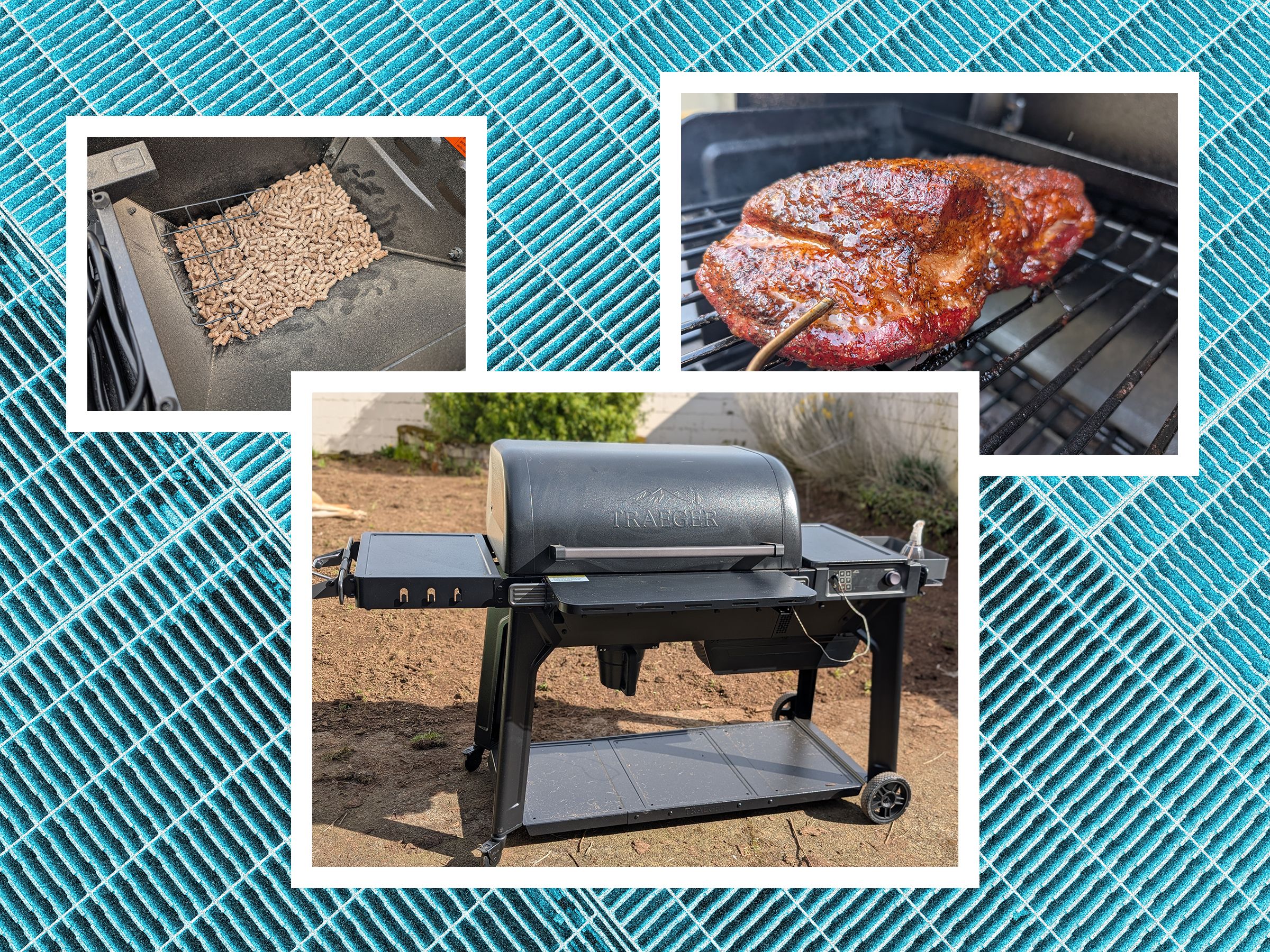As someone who enjoys a lot of good food, there’s something about smoked meat that’s always enchanting. There are no shortcuts, just a lot of time and effort, and the scale required often means bringing friends and communities together to eat.
You might think it’s odd that someone from Portland would love barbecue so much, but you can thank our unique food culture. Oregon is mostly known for inventing fried foods like corn dogs and tater tots, honors I hold dear, but without a distinct cultural anchor, we’re particularly open to other traditions. As a result, you’re likely to find the best Texas-style barbecue outside of Texas floating in a deliciously spicy white curry, or pork belly burnt ends dripping with sticky gochujang.
Photograph: Brad Bourque
We also have a unique spot in the world of smoking appliances: Traeger and modern pellet smokers as we know them were invented in Oregon in the early 1980s, though the brand is now based in Salt Lake City. When the opportunity came along to review Traeger’s Woodridge Pro, I decided it was my civic duty to put on the black pitmaster gloves and get started. It was a humbling experience, but one made easier by the Traeger’s dead-simple usage and consistent temperature control, even if the app and interface leave me wanting something a little more well done.
Setup
Photograph: Brad Bourque
Setting up something this large and complex can be daunting, so I really appreciate Traeger’s approach. Each phase of the process has an animal associated with it, so you can easily separate the boxes and find what you’re looking for based on which section you’re currently in. The largest part of the box forms a mat with a diagram of where everything goes.
It took about three hours by myself to get it up and running, and the only awkward part of solo setup was having to flip the smoker halfway through. There’s an initial burn-off period, typical of all smokers and ovens, which takes another two hours or so, plus a cool-down period before you can start smoking. The bottom line here is: If you plan on having friends over to smoke on Saturday, start setting up by noon on Friday, and try to do the burn-off that evening so it will be ready for go time.
I was worried about cleaning, given the large grill surface, but it’s really easy to take care of. All the grease and ash drops into a single, lined compartment you can just chuck. The shield underneath pops right out for cleaning, and you can drop the extra pellets out the back of the hopper through a hatch, which means they never have to stay outside too long and get mushy.
Photograph: Brad Bourque
App and Interface
Having spent time with both the Woodridge and the Timberline (7/10, WIRED Recommends), I prefer the interface on the latter, which uses a straightforward knob and LCD screen. The Woodridge has capacitive touch buttons and a colorful dot matrix display that looks nice, but requires a bit of deciphering the first few times.
The app itself is fine for checking on your temps or keeping an eye on the pellet level but basically just replicates the controls on the front of the smoker. I’d love to see a brief temperature history, the ability to set a heat curve, or a mode that can respond to probe readings. The pieces are all here in terms of hardware, and Traeger is in a unique place to capitalize on them.
The built-in pellet tracker is mounted at the front edge of the hopper, so it can be a little dramatic about how low it’s getting. As it gets under halfway, it starts to pile up at the back and will warn you it’s low but often just needs to be shifted around.
I also wanted to call out one oddity I noticed in testing, which is that dogs seem very attracted to the big knob on the Woodridge’s control panel. Three different dogs who came over to my house during smoking sessions pressed it with their noses, probably due to the combination of meat smell and seeing other people touching it. They wouldn’t be able to turn on the grill, but they can mess with you while you’re setting the temperature if they’re mischievous or curious like mine.
The Smoke
Coming from the world of propane grills, the size of the Woodridge Pro really struck me. You could easily smoke two full-sized pork bellies at the same time, and I hope to very soon. As it was, my usual Costco pork belly loads up half the smoker, which is more than enough to feed some friends and have leftovers for myself.
It couldn’t be easier. Set the temperature, keep the hopper filled, and everything else is managed automatically. Instead of worrying about vents or fan speeds or fuel, I typically just hang out in the backyard, get some work done, play with the dog, and focus on the meat.
Photograph: Brad Bourque
I’ve found myself more willing to do all the extra steps that really make a meal great. I’m marinating and brining ahead of time, getting rub recipes from friends, making pickled onions instead of buying them. Stuff that sounds simple but can be easy to skip if you’re feeling lazy. Knowing I have a delicious chunk of meat on the smoker motivates me to go the extra mile.
As a result, I’ve made or contributed to some of my best meals ever over the last couple of months, and brought my friends together to enjoy them. We’ve eaten tender pork belly tacos coated in a savory and spiced rub carefully refined by my neighbor, juicy pork chops with a crusty exterior, coppa sandwiches on a friend’s homemade focaccia. In between, I’ve enjoyed luxurious leftovers like fried rice, smoked egg salad, and simple sandwiches. More than just a grill, the Woodridge has become a part of my kitchen and cooking routine more quickly and seamlessly than I would’ve imagined.
Photograph: Brad Bourque
Temperature Range
The Woodridge Pro only gets down to 180 degrees Fahrenheit, so there’s no option for a true cold smoke. Instead, there’s a Super Smoke button, which you can use below 225 degrees to produce more smoke. It’s meant for the early stages of larger meats, and I liked using it on some ribs, but I found stuff gets more than smoky enough without it.
Since it goes up to 500 degrees, you can technically grill on it. This chews through pellets pretty quickly, it takes a while to get that hot, and the grill surface is huge, so it’s probably more likely you’ll do this for pizza than for burgers. It works in a pinch, but there are more efficient ways to get the job done if you just want to grill.
While I’d still recommend upgrading to something like the Combustion (9/10, WIRED Review) for really detailed info, I was impressed with the accuracy of the included probe, which was a classic metal stick on a wire. At one point I sent a photo of pork chops to friends, showing that I had nailed the temperature within a degree of my goal.
Photograph: Brad Bourque
I still have hundreds of Friday afternoons and thousands of hours spraying down pork belly with vinegar before I can even dream of making barbecue like my favorite spots in town, but knowing the Woodridge is consistent and straightforward means I can focus on everything else.
I can see why Joe Traeger designed the first one in 1985. I’m impressed with how quickly I went from smoker novice to producing meat that I can really be proud to share with friends and family, with basically only one bad smoke along the way.
I owe a lot of that to pellet smokers in general and the Woodridge in particular, which is easy to get up and running and produces consistent results with minimal fuss. The cooking aspects of the Woodridge are well done, and the rarer bits have more to do with tech and software than they do with perfect pork shoulder.




